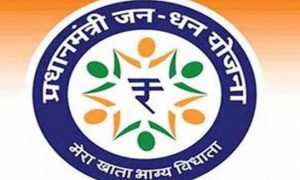ITR FY2024: P2P Lending or Peer-to-Peer Lending is one of the upcoming and somewhat most trusted ideas to earn passive income. P2P lending, also known as social lending, is an innovative financial model that has seen considerable growth in recent years. This approach provides individuals with an alternative means of securing funds without the need for traditional banks or financial institutions. Moreover, it offers lenders the opportunity to achieve potentially higher returns on their investments.
P2P lending represents a significant advancement in alternative finance, where online platforms facilitate direct connections between lenders and borrowers. These digital marketplaces enable individuals to obtain loans without the involvement of traditional financial intermediaries such as banks.
This innovative approach offers substantial benefits, particularly for borrowers who face challenges securing loans through conventional means—such as those with suboptimal credit scores or limited credit histories. By utilising P2P lending platforms, these borrowers can access funding from individual lenders who are prepared to assume certain risks in exchange for the prospect of higher returns.
Read More: Aadhaar-PAN link: Income Tax Department issues step-by-step guide to avoid higher TDS. Check here
Tax implication in P2P lending
P2P lending regulated in India is regulated by the Reserve Bank of India. Under the P2P lending, investors accrue interest on the sums they lend. Analogous to interest accrued from other financial instruments such as Fixed Deposits (FDs), the interest income derived from P2P lending is subject to taxation.
Specifically, this interest income is categorized under ‘Income from Other Sources.’ Consequently, it is aggregated with the lender’s total income and taxed according to their respective tax bracket. For instance, an individual falling within the 30% tax bracket will incur a 30% tax obligation on the interest earned through P2P lending activities.
How to report P2P lending income in ITR
Read More: How To Prepare Yourself For Upcoming Tax Season India?
Components of P2P lending income that individuals need to report in their ITR
When preparing your ITR for P2P lending income, it’s crucial to ensure accuracy in reporting all relevant components. To begin with, you should meticulously account for the gross interest earned through P2P lending activities. This income falls under the category of ‘Income from Other Sources’ in your tax return. The importance of not overlooking any interest earned, as even small amounts can accumulate over time and impact your tax liability. The significance of documenting any Tax Deducted at Source (TDS) applied to your interest income. In some cases, P2P lending platforms may deduct TDS on the interest earned by lenders. This TDS amount serves as advance tax paid on your behalf and must be duly accounted for in your ITR,” Bhuvan Rustagi, Co-Founder and COO of Per Annum.
Common mistakes or misconceptions on P2P lending income
Some of the common mistakes are:
> Ensure to declare the full interest income, separate additional fees, and classify income correctly in tax returns.
> Misreporting can lead to underreporting or incorrect categorization, potentially triggering audits by tax authorities.
“It’s essential to account for loan origination fees, service charges, and late payment fees separately from the interest income. Furthermore, misclassifying income under incorrect heads in the tax return poses a significant risk. Income from P2P lending should typically be reported under the category of Income from Other Sources’ or Interest Income. The importance of accurate reporting to maintain compliance with tax laws and regulations. Ensuring that all forms of income from P2P lending are correctly reported is crucial to avoid discrepancies and potential issues with tax authorities,” Rustagi said.
Documentation and records needed for ITR
> Interest income statements provided by the P2P lending platform
> Detailed transaction records
> Platform account statements summarising all income and fees
> Receipts and invoices for any additional charges incurred throughout the lending process
> Bank statements to ensure that reported income matches actual deposits
> Keeping records of Tax Deducted at Source (TDS) certificates or Form 26AS to facilitate accurate claiming of TDS credits
“TDS certificates provide documentation of tax deducted on interest income by the P2P lending platform. By retaining these certificates and referencing Form 26AS, lenders can ensure they accurately claim TDS credits in their tax return, thus avoiding potential issues with tax authorities. By keeping thorough documentation of all P2P lending activities, lenders can minimise the risk of discrepancies and demonstrate transparency in their tax reporting. This proactive approach not only facilitates accurate tax filing but also safeguards against potential audits or inquiries from tax authorities,” Rustagi added.





































